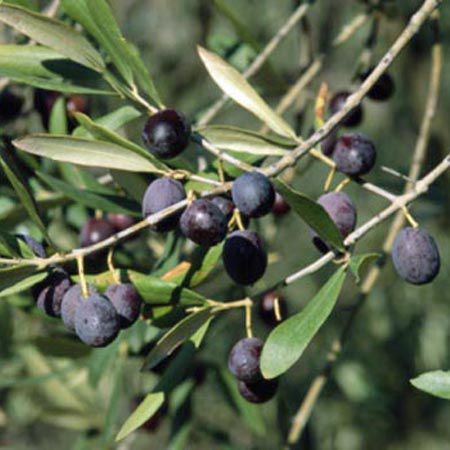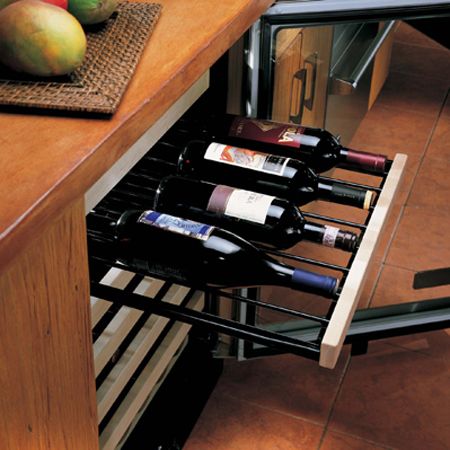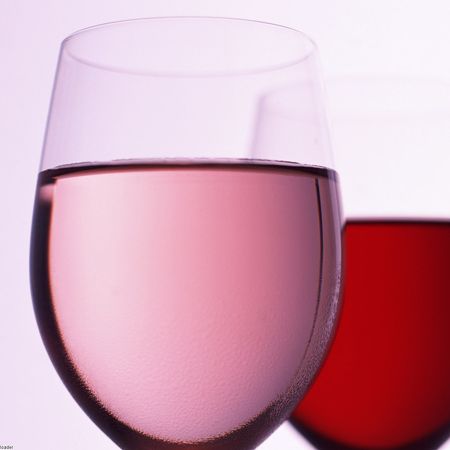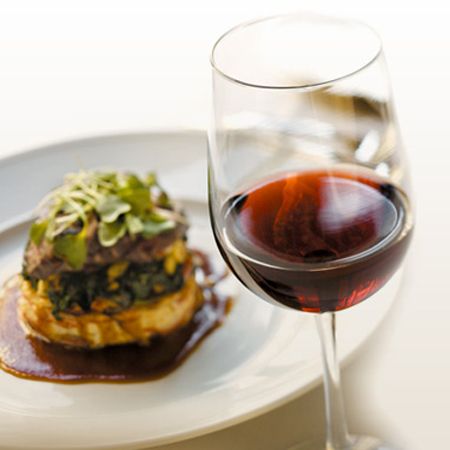Olive Oil: Looks Green, Smells Green, Tastes Green

The Mediterranean diet has long been hailed as a model for how to eat for healthy living. One of the pillars of the Mediterranean diet is olive oil, and often it’s the only fat present in the diets of people described as healthy for how they eat. Those folks eat a diet full of fresh, seasonal, genuine fruits, vegetables, and legumes; a diet rich in grains, which here in Tuscany arrive in the form of pasta, bread, and farro; cheeses but hardly any milk at all; fish; some meats which are the real deal, genuine farm-raised ovino, bovino, suino e pollame (lamb, beef, pork, and fowl); a healthy dose of (usually red) wine; and olive oil as the only fat.
The best thing about the food here is not how it’s prepared, it’s that the materia prima, the primary ingredients, are super good, genuine products. What we eat is genuinely grown or raised, produced or cured. The fruits, vegetables, meat, and poultry are usually from nearby farms, and the cheeses are made by the same nice folks who supply the lambs. In the new lingo of the U.S., we buy small and we buy local. They do it because they always have done it. I do it because it’s sort of fun knowing the folks who make what I eat. In the end, it’s a good way to personally affect quality control. Here in Italy we have no e. coli spreading throughout the entire nation’s food chain in one fell swoop.
Plus they usually finish a meal with fruit. Desserts don’t show up often, and are rather spartan when they do. They never snack between meals. And I’d add to all that that they’re not a sedentary bunch, always delving into some exertion-requiring project. My neighbors are out hauling large stones, felling trees, splitting and stacking wood, shoveling, hoeing, hiking, and exerting themselves on all sorts of industrious chores. The lady up the street, in skirt and kerchief, was out with the chainsaw this morning sawing oven-sized pieces from the woodpile out back. Piero is always hauling hefty crates of olives or grapes, usually up on top of his shoulder, or scampering up the mountainside in search of porcini mushrooms or the prized marrone variety of chestnuts. To run errands, the ladies in town stroll through the village, a classic Tuscan hill town with impossibly steep, cobblestone streets, usually in high heels.
The olive oil in their diets has been shown as beneficial, primarily for the antioxidant properties of its biophenols – the same components that give olive oil its good flavor. That makes identifying a good, genuine, high-quality olive oil easy – if it doesn’t taste good, it’s not good olive oil and it’s not good for you.
What good olive oil can do for you is act against radical oxidation (the fundamental cause of cardiovascular disease and the development of tumors), and help prevent oxidation of LDL cholesterol, to cite just two of its many beneficial properties. But to get those benefits, you have to have use a good olive oil. An olive oil that was made from unhealthy olives (think about making orange juice from rotten oranges), or that wasn’t stored properly will most likely have suffered from auto- or photo-oxidation. The end result of oxidation is rancidity, which means that the biophenols have been degraded to such an extent that the oil has spoiled and free radicals have formed. In other words, bad oil tastes bad and it’s bad for you.
But good olive oil tastes good and is good for you. It’s the perfect food: use it for savory or sweet recipes, use it in marinades, for sautéing, frying, baking, or use it raw. Substitute olive oil one-to-one for other oils in any of your recipes. Use 80% olive oil if you’re substituting for a solid fat.
A bad olive oil is bad for you whether you cook with it or not. A good olive oil is always good, imparting its antioxidants into foods even at high temperatures. The smoke point of olive oil is 410º F (210º C). You can even fry in olive oil; the ideal frying temperature being between 338 - 356º F (170 - 180 º C). The University of Naples conducted a study frying potatoes in the same pan of olive oil for seven hours straight. At the end of the day, the olive oil was still imparting its antioxidants onto the potatoes.
I love olive oil for all those beneficial properties it has, because it’s a totally natural product and because it tastes so good. Olive oil’s various aromas, whether the artichoke and fresh-cut grass aromas of a Tuscan oil, or the tomato-y flavor of a Sicilian oil, don’t necessarily show up in a cooked recipe. My brownies and cakes don’t taste like artichokes. Neither do my risottos and pastas, which is why I add a swirl of raw oil to a finished savory dish. What olive oil does though, besides bombarding your food with vitamins and antioxidants, is enhance the flavors of the other ingredients it comes into contact with. Sort of like salt, anything cooked or baked with olive oil has a deep richness of flavor and leaves your palate fresh and clean.
As some brilliant chef said once about wine: if it’s not good enough to drink, don’t put it on your food - I say about olive oil. If it’s not good enough to drink, don’t put it on your food. And that’s the best way to judge an olive oil: smell it and then take a sip.
A good olive oil should first exhibit freshness, it will present all sorts of aromas that depend upon its terroir, and all of them will harken back to the world of fresh fruits and vegetables. If it’s peppery, maybe a little bitter, full of aromas like artichoke and almond, or fresh cut grass and rosemary, if it’s got a rich flavor, complexity, and a nice thick body, if it leaves your palate clean, then you’re on the right track. If it doesn’t smell fresh, if it smells like vinegar, rotten tomatoes or rotten apples, if it’s acrid, if it makes you feel like you have a sore throat, if it’s liquidy and greasy and coats your mouth, it’s not the good stuff.
To have somewhat of a clue which bottles to buy, keep in mind that the smaller farmers who work well here in Italy often include some specifics on their labels, like the location of the farm, varieties of the olives, and dates and methods of harvest and pressing. Vineyards who make good wines often make a good olive oil too. The new DOP (denominazione origine protetta) certifications are a sure bet of good quality. It’s new, but growing quickly, so keep your eye out for the little DOP stickers on bottles of qualified oils. Labels don’t much help since the traditional classification system (extra virgin, virgin and etc.) has been taken hostage by industrial producers, and is no longer even a slight indication of quality. You definitely want an extra virgin olive oil. It’s the only way to be reasonably sure that an oil has been produced by mechanical means and not chemically extracted. But most of the catchwords you see on labels are non-starters. An olive oil that’s not been “cold pressed” or doesn’t come from the so-called “first press,” cannot possibly qualify as extra virgin. So buy a few bottles, taste the oils to identify a few you like, and stick with the producers you trust.
Here in the provinces in mid-December the olive harvest is winding down. Only a few stragglers are bringing their olives to the mills, which now open only a few days a week; two weeks ago they were up and running 24/7. New oil is found at every country fair, on the counters of local fruit and vegetable shops (label-less and defying all the rules), on supermarket shelves, and being sold in bulk straight from the mill.
A visit to the mill is a treat this time of year. The festival attitude that accompanies the harvest, with laughing, storytelling, and singing of folk songs, carries over into the mill. It’s only slightly dampened by the fact that big business is being transacted in the corners of noisy mills and behind the closed doors of their small offices. The tension on the faces of the farmers is evident as they go to check their resa/yield, weighing the just-pressed oil to see if their olives and the mill have given what they think of as a good yield. But there’s a festival atmosphere all the same with most mills keeping a table at the ready for a quick picnic style fettunta: a bottle of local wine, a loaf of bread, a grill, salt, and garlic. Clearly you’re to bring your own oil. Or do what I do, which is to sweet-talk the farmer at the end of the line into letting me slide a plastic cup under the spigot to get a dose of olive oil fresher than fresh. Then make up a fettunta - a toasted slab of hearty Tuscan bread rubbed with garlic, sprinkled with salt, and then drenched with the spicy, thick new oil: looks green, smells green, tastes green.
Sources:
Olivo e Olio, Anno II settembre 1999, “I biofenoli nelle olive e nell’olio per il benessere dell’uomo”, Prof. Nicola Uccella et. al.
Olivo e Olio, Anno II settembre 1999, “Estrazione nuove, acquisizioni e qualita attesa dai consumatori,” Gian Francesco Montedoro and Sonia Esposto.
Olivo e Olio, Anno VII aprile 2004, “Oilo, elixir per una vita lunga,” Giuseppe Francesco Sportelli.
Olivo e Olio, Anno VII novembre/dicembre 2004, “Sì alle patate fritti nel extra vergine,” Università Federico II, Napoli, Dipartimento degli Scienze Alimentari.
Olivo e Olio, Anno VIII maggio 2005, “Questa filtrazione s’ha da fare,” GianFrancesco Montedoro et al.
Dott.ssa Daniela Calieri, chemist/nutritionist, Florence, Italy, telephone conversation June 2006.


